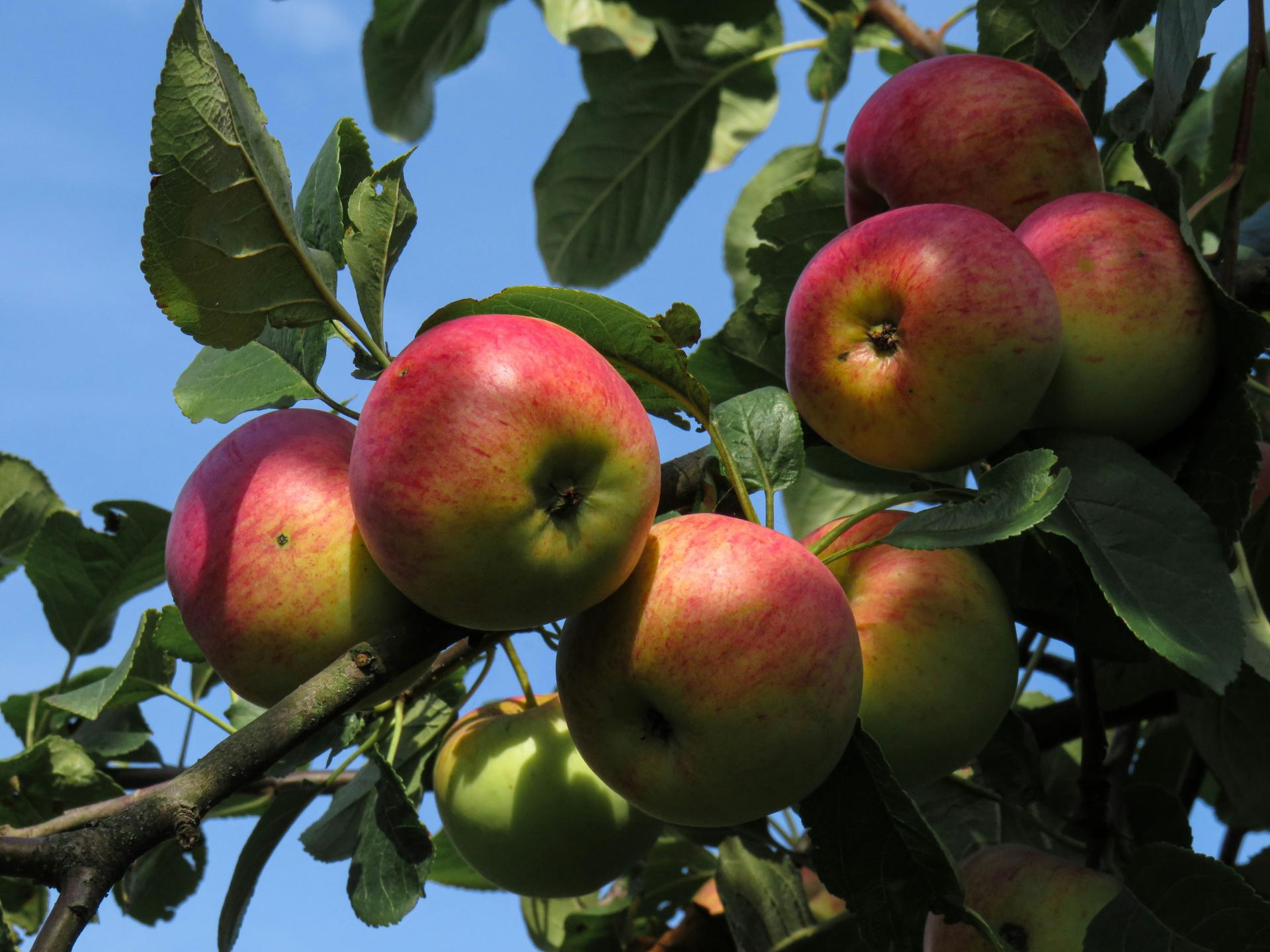You are here
Be A Better Gardener: A New Challenge for Apples and Others
Be A Better Gardener: A New Challenge for Apples and Others
By Thomas Christopher
Three years ago, I planted a little orchard of 20 dwarf cider apple trees. This spring I replanted – six of the little trees died last summer. Now I am wondering about my ability to grow apples at all in my Massachusetts garden – as well as other members of the rose family such as pears, crabapples, quince, mountain ash, hawthorn, serviceberry, cotoneaster and pyracantha. What killed my six trees was an incurable bacterial infection, Erwinia amylovora, commonly known as “fire blight.” This disease used to be more prevalent in warmer, more humid areas of the country, and only appeared occasionally in the Northeast.
Thanks to climate change, however, it is now finding our region more hospitable and is common in orchards as far north as New Hampshire and Maine. The New England Botanic Garden in Boylston, Massachusetts was famous for its collection of heirloom apple trees — 238 specimens, two each of 119 varieties — a living encyclopedia of local apple types that had taken decades to assemble. Fire blight first appeared in the collection in 2011, and by 2019 had spread so generally through the trees that the Botanic Garden pulled them all. “Scions,” slips of still healthy branches were saved and grafted onto Fire blight resistant rootstocks in a Maine nursery that was as yet uninfected, and in 2022 the orchard was replanted with these young and disease-free trees.
There are apple varieties such as ‘Liberty’ that have demonstrated some resistance to this disease, and if your goal is simply to raise some fruit for pies, sauce, or lunch boxes, it makes sense to plant these. My goal, however, is to harvest fruit that produces the right balance of flavors, sweetness, and acidity to make a really good hard (i.e. fermented) cider. For me, then, choosing apple varieties solely on the basis of disease resistance would be like passing up a ‘pinot noir’ or ‘chardonnay’ grapevine in favor of a ‘concord’. My only realistic option, other than abandoning my hard cider-making venture altogether, is to keep my mini-orchard on a program of protective spraying.
I typically avoid the use of pesticides, but I plan to make an exception in this case as the sprays involved are not dangerous to humans or wildlife if used in accordance with the precautions listed on the label and are even acceptable to organic gardeners. I’ll begin with a spray of a soluble copper compound applied when the trees’ buds are swelling. The high-risk period for infection is when the trees flower, as bees can become a vehicle for spreading the bacterium as they move from tree to tree. The risk is especially acute if a period of warm weather coincides with rain during blossom season.
Because copper spray can injure bees, orchardists have in the past typically applied the antibiotic streptomycin as many as 3-4 times during the period between blossom opening and when the petals fall. This practice is not recommended as safe for home gardeners like me, and anyway, the fire blight bacteria have evolved a resistance to this drug. I also question the wisdom of mass applications of such drugs. Instead, I intend to apply one of the new biological disease sprays based on bacteria naturally found in the soil which, when applied to plants as a spray or a soil drench, have demonstrated the ability to inhibit the growth of other, pathogenic bacteria or fungi. One common product of this sort, the one I will be using, is Monterey Complete Disease Control. The recommendation on its label is to apply it every three to seven days for as long as the apple blossoms are open.
This bacterial spray is not listed as posing a risk to humans, nor is the use of protective gear recommended for the applicator. Out of an abundance of caution, however, I intend to wear a long-sleeved shirt and long pants, rubber boots and gloves, a mask, and goggles. I also urge the reader to share any questions and concerns they may have with their local Cooperative Extension.
Copper and bacterial sprays will not cure the trees; they will only suppress the spread of the fire blight pathogen. The Connecticut Agricultural Experiment Station has published an excellent concise fact sheet, “Fire Blight,” available for free at https://portal.ct.gov/caes/fact-sheets/plant-pathology/fire-blight. This describes the symptoms in detail, and how to prune affected trees during the dormant season to slow the progress of the disease with the tree and limit its ability to spread to adjacent trees.
Be-a-Better-Gardener is a community service of Berkshire Botanical Garden, located in Stockbridge, Mass. Its mission, to provide knowledge of gardening and the environment through a diverse range of classes and programs, informs and inspires thousands of students and visitors each year. Thomas Christopher is a volunteer at Berkshire Botanical Garden and is the author or co-author of more than a dozen books, including Nature into Art and The Gardens of Wave Hill (Timber Press, 2019). He is the 2021 Garden Club of America's National Medalist for Literature, a distinction reserved to recognize those who have left a profound and lasting impact on issues that are most important to the GCA. Christopher’s companion broadcast to this column, Growing Greener, streams on WESUFM.org, Pacifica Radio and NPR and is available at berkshirebotanical.org/growinggreener.
Help Our Garden Grow!
Your donation helps us to educate and inspire visitors of all ages on the art and science of gardening and the preservation of our environment.
All Donations are 100% tax deductible.


